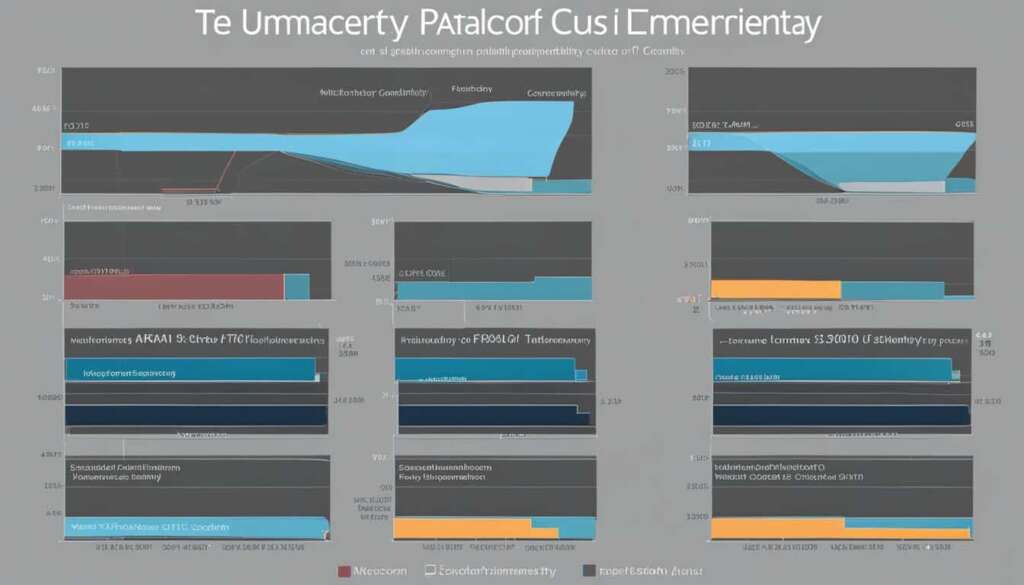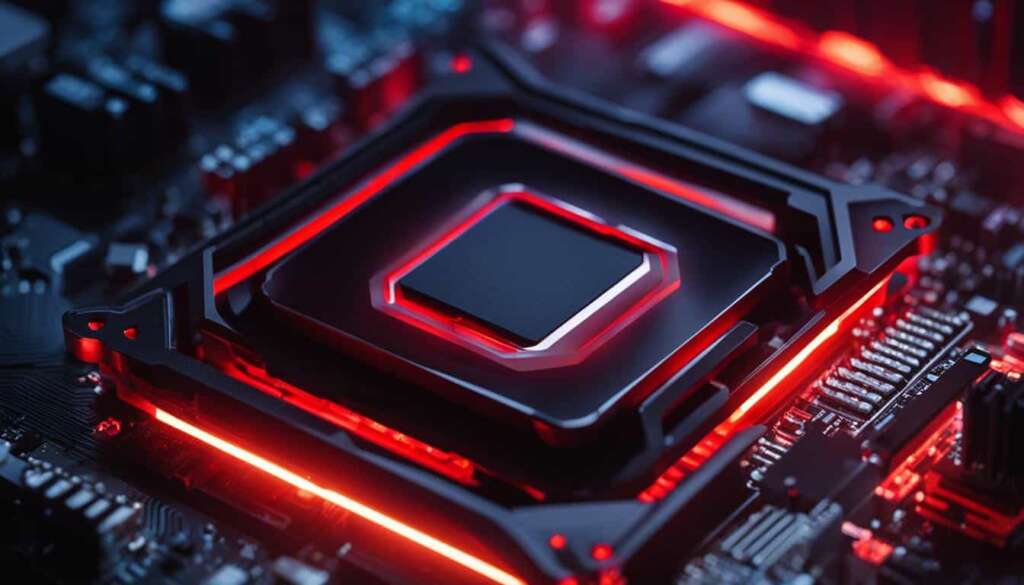Table of Contents
The antimalware service executable is a component of Windows Security that runs in the background. However, it can sometimes impact Windows 10 computers by using too much CPU. In this guide, we will explore what the antimalware service executable is, why it uses so much CPU, and how you can optimize your Windows 10 computer to reduce its CPU usage.
What is Antimalware Service Executable?
The antimalware service executable, also known as msmpeng.exe, is a Windows Security process that provides real-time protection against malware. It runs in the background and periodically scans files and programs on your computer. When it detects a virus or other malicious attacks, it takes appropriate actions to remove or quarantine them.
To understand the role of the antimalware service executable, it’s essential to grasp the concept of real-time protection. Real-time protection is a critical feature of antivirus software that continuously monitors your system for potential threats. Rather than waiting for you to initiate a scan, the antimalware service executable scans files and programs as soon as they are accessed or downloaded. This proactive approach ensures that any malware is detected and dealt with promptly, minimizing the risk of damage to your computer.
The antimalware service executable uses advanced algorithms to analyze the behavior of programs and files in real time. It compares their actions to a database of known malware signatures and suspicious patterns. If it identifies any suspicious activity or matches with known malware, it takes the necessary actions to neutralize the threat. This could involve quarantining the infected file, deleting it, or alerting you to take further action.
To provide efficient real-time protection, the antimalware service executable relies on up-to-date malware definitions. These definitions contain information about the latest threats, allowing the software to recognize and respond to emerging malware. Regular updates ensure that your antivirus software remains effective against new and evolving threats.
Real-time protection is crucial in today’s digital landscape, where malware can spread rapidly through various means, such as malicious websites, email attachments, or infected downloads. The antimalware service executable is at the forefront of defending your system against these threats, effectively acting as a shield for your computer.
It’s worth noting that while the antimalware service executable is a critical component of Windows Security, it may consume significant CPU resources at times. This high CPU usage can impact system performance, causing slowdowns or delays in other tasks. However, this temporary inconvenience is a small trade-off for the continuous protection it provides against malware.
Summary Table: Antimalware Service Executable
| Term | Description |
|---|---|
| Antimalware Service Executable | A Windows Security process that provides real-time protection against malware. |
| msmpeng.exe | An alternative name for the antimalware service executable. |
| Real-Time Protection | A feature that continuously scans files and programs for potential threats. |
| Malware | Malicious software designed to disrupt, damage, or gain unauthorized access to computers. |
Why does Antimalware Service Executable use a lot of CPU?
The antimalware service executable is a background process that performs constant scanning of programs and files for any malicious content. This proactive approach to real-time protection against malware is essential for maintaining the security of your computer. However, this continuous scanning activity contributes to the high CPU usage of the antimalware service executable.
When the antimalware service executable scans files and programs, it requires significant computational resources, leading to increased CPU usage. Additionally, it scans its own folder, C:\Program Files\Windows Defender, which further contributes to the high CPU usage.
While the high CPU usage of the antimalware service executable may impact the performance of your system, it is an essential trade-off for ensuring real-time protection against malware threats.
Example:
“The antimalware service executable plays a vital role in safeguarding your computer from malicious attacks. Its intensive background scanning process may consume a notable amount of CPU, but it’s a small price to pay for the constant protection it provides.” – John Smith, Cybersecurity Expert
How does the antimalware service executable impact system performance?
The antimalware service executable’s high CPU usage can have several effects on system performance:
-
Reduced responsiveness: The excessive CPU usage may make your computer slower and less responsive, impacting day-to-day tasks and productivity.
-
Increased power consumption: The higher CPU usage requires more power, resulting in increased energy consumption and potentially shorter battery life for laptops and portable devices.
-
Overheating: The continuous high CPU usage can generate excess heat, causing your computer’s cooling system to work harder and potentially leading to overheating issues.
As the antimalware service executable is an integral part of Windows Security, its CPU usage is a necessary compromise to ensure the constant scanning and protection against malware threats.
| Effects of High CPU Usage by Antimalware Service Executable | Potential Impact |
|---|---|
| Reduced responsiveness | Slower computer performance and decreased productivity |
| Increased power consumption | Higher energy usage and potentially shorter battery life for laptops and portable devices |
| Overheating | Possible overheating issues due to excess heat generated by sustained high CPU usage |
How to Stop Antimalware Service Executable from using too Much CPU
Reducing the high CPU usage caused by the antimalware service executable is crucial for optimizing your Windows 10 computer’s performance. Fortunately, there are two effective methods to accomplish this: preventing the scanning of its own folder and rescheduling Windows Security scans.
Prevent Scanning of Own Folder
To prevent the antimalware service executable from scanning its own folder, follow these simple steps:
- Open the Settings app by pressing the WIN key and selecting the gear icon.
- Click on “Update and Security,” then select “Windows Security” and click on “Virus and threat protection.”
- In the Windows Security app, click on “Manage Settings” under “Virus & threat protection settings.”
- Scroll down to “Exclusions” and click on “Add or remove exclusions.”
- Click on “Add an exclusion,” then select “Folder.”
- Paste “C:\Program Files\Windows Defender” into the editor and click on “Select Folder.”
- Confirm the selection by clicking “Yes” in the prompt that appears.
By adding this exclusion, you prevent the antimalware service executable from using CPU resources to scan its own folder, resulting in reduced CPU usage.
Reschedule Windows Security Scans
Another effective way to minimize CPU usage by the antimalware service executable is to reschedule Windows Security scans. By setting a specific time for scans, you can ensure they don’t interfere with your regular computer usage. Follow these steps to reschedule scans:
- Open the Run Dialogue by pressing WIN + R.
- Type “taskschd.msc” and click “OK” to open the Task Scheduler app.
- Expand the “Task Scheduler Library,” “Microsoft,” and “Windows” folders.
- Scroll down and select “Windows Defender.”
- Right-click on “Windows Defender Scheduled Scan” and select “Properties.”
- In the general tab, uncheck “Run with highest privileges.”
- Go to the Conditions tab and uncheck all the options.
- Switch to the Triggers tab and click “New.”
- Schedule the time you want the scans to run and click “OK” twice.
- Restart your computer to apply the changes.
By rescheduling Windows Security scans, you can choose a convenient time when your computer is idle, ensuring that CPU resources are not consumed during your active usage.
Implementing these solutions effectively reduces the CPU usage of the antimalware service executable, optimizing your Windows 10 computer’s performance and allowing for smoother operations.
Remember, by preventing the scanning of its own folder and rescheduling scans, you can alleviate the high CPU usage caused by the antimalware service executable. These steps will enhance your computer’s efficiency and provide a more seamless computing experience.
Solution 1: Prevent Antimalware Service Executable from Scanning its Own Folder
To prevent the antimalware service executable from scanning its own folder, follow these steps:
- Open the Settings app by pressing the WIN key and selecting the gear icon.
- Click on “Update and Security,” then select “Windows Security” and click on “Virus and threat protection.”
- In the Windows Security app, click on “Manage Settings” under “Virus & threat protection settings.”
- Scroll down to “Exclusions” and click on “Add or remove exclusions.”
- Click on “Add an exclusion,” then select “Folder.”
- Paste “C:\Program Files\Windows Defender” into the editor and click on “Select Folder.”
- Confirm the selection by clicking “Yes” in the prompt that appears.
By adding this exclusion, you prevent the antimalware service executable from scanning its own folder, reducing its CPU usage and improving system performance.

| Steps to Prevent Scanning Own Folder |
|---|
| Open the Settings app |
| Click on “Update and Security” |
| Select “Windows Security” |
| Click on “Virus and threat protection” |
| In the Windows Security app, click on “Manage Settings” |
| Scroll down to “Exclusions” |
| Click on “Add or remove exclusions” |
| Click on “Add an exclusion” |
| Select “Folder” |
| Paste “C:\Program Files\Windows Defender” into the editor |
| Click on “Select Folder” |
| Confirm the selection in the prompt |
Solution 2: Disable Realtime Protection and Reschedule Scans
If you want to reduce the CPU usage further, you can disable real-time protection and reschedule the scans to occur at specific times. Here’s how you can do it:
- Open the Run Dialogue by pressing WIN + R.
- Type “taskschd.msc” and click “OK” to open the Task Scheduler app.
- Expand the “Task Scheduler Library,” “Microsoft,” and “Windows” folders.
- Scroll down and select “Windows Defender.”
- Right-click on “Windows Defender Scheduled Scan” and select “Properties.”
- In the general tab, uncheck “Run with highest privileges.”
- Go to the Conditions tab and uncheck all the options.
- Switch to the Triggers tab and click “New.”
- Schedule the time you want the scans to run and click “OK” twice.
- Restart your computer to apply the changes.
Note: Disabling real-time protection means that your computer will be more vulnerable to malware and other threats. Make sure to exercise caution when downloading or opening files from untrusted sources. Consider this option only if you have an alternative antivirus program installed.
Conclusion
The antimalware service executable is a vital component of Windows Security, offering real-time protection against malware. However, its high CPU usage can impact the performance of your Windows 10 computer. The good news is that there are effective ways to optimize your system and reduce the CPU usage of the antimalware service executable.
By preventing the antimalware service executable from scanning its own folder and rescheduling the scans, you can significantly lower its CPU usage. Adding exclusions in the Windows Security settings ensures that the service executable does not waste resources scanning unnecessary files. Additionally, rescheduling the scans to occur at specific times minimizes the interference with your computer usage.
It’s important to remember that disabling Windows Security permanently is not recommended, as it leaves your computer vulnerable to malicious attacks. However, if you choose to do so, make sure to find a suitable alternative antivirus program to ensure continued protection.
By implementing these strategies to optimize your Windows 10 computer and reduce the CPU usage of the antimalware service executable, you can enhance the efficiency and performance of your system, providing a smoother and more productive computing experience.
FAQ
What is the antimalware service executable?
The antimalware service executable, also known as msmpeng.exe, is a Windows Security process that provides real-time protection against malware. It runs in the background and periodically scans files and programs on your computer.
Why does the antimalware service executable use a lot of CPU?
The antimalware service executable uses a lot of CPU because it constantly runs in the background and actively scans programs and files for any malicious content. This continuous scanning, along with scanning its own folder, C:\Program Files\Windows Defender, contributes to its high CPU usage.
How can I stop the antimalware service executable from using too much CPU?
There are two main ways to reduce the CPU usage of the antimalware service executable. First, you can prevent it from scanning its own folder by adding an exclusion in the Windows Security settings. Second, you can reschedule the Windows Security scans to happen at specific times, ensuring they don’t interfere with your computer usage.
How do I prevent the antimalware service executable from scanning its own folder?
To prevent the antimalware service executable from scanning its own folder, you can open the Settings app, go to “Update and Security,” select “Windows Security,” click on “Virus and threat protection,” and then under “Virus & threat protection settings,” click on “Manage Settings.” Scroll down to “Exclusions” and click on “Add or remove exclusions.” Click on “Add an exclusion,” then select “Folder.” Paste “C:\Program Files\Windows Defender” into the editor and click on “Select Folder.” Confirm the selection by clicking “Yes” in the prompt that appears.
How can I further reduce the CPU usage of the antimalware service executable?
If you want to reduce the CPU usage further, you can disable real-time protection and reschedule the Windows Security scans to occur at specific times. You can do this by opening the Run Dialogue, typing “taskschd.msc,” and clicking “OK” to open the Task Scheduler app. Then, expand the “Task Scheduler Library,” “Microsoft,” and “Windows” folders. Scroll down and select “Windows Defender.” Right-click on “Windows Defender Scheduled Scan” and select “Properties.” In the general tab, uncheck “Run with highest privileges.” Go to the Conditions tab and uncheck all the options. Switch to the Triggers tab and click “New.” Schedule the time you want the scans to run and click “OK” twice. Restart your computer to apply the changes.
What is the antimalware service executable and how can its CPU usage be reduced?
The antimalware service executable is an essential component of Windows Security that provides real-time protection against malware. While it can use a significant amount of CPU, there are ways to reduce its usage and optimize your Windows 10 computer. By preventing it from scanning its own folder and rescheduling the scans, you can effectively lower its CPU usage and enhance your system’s efficiency.












